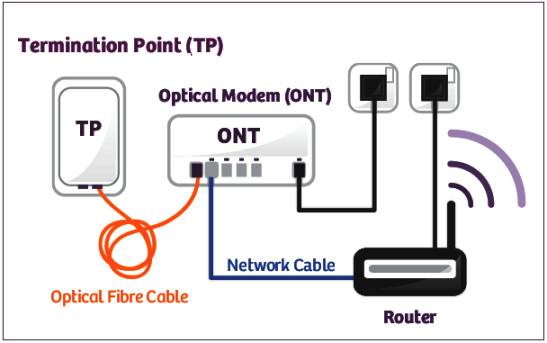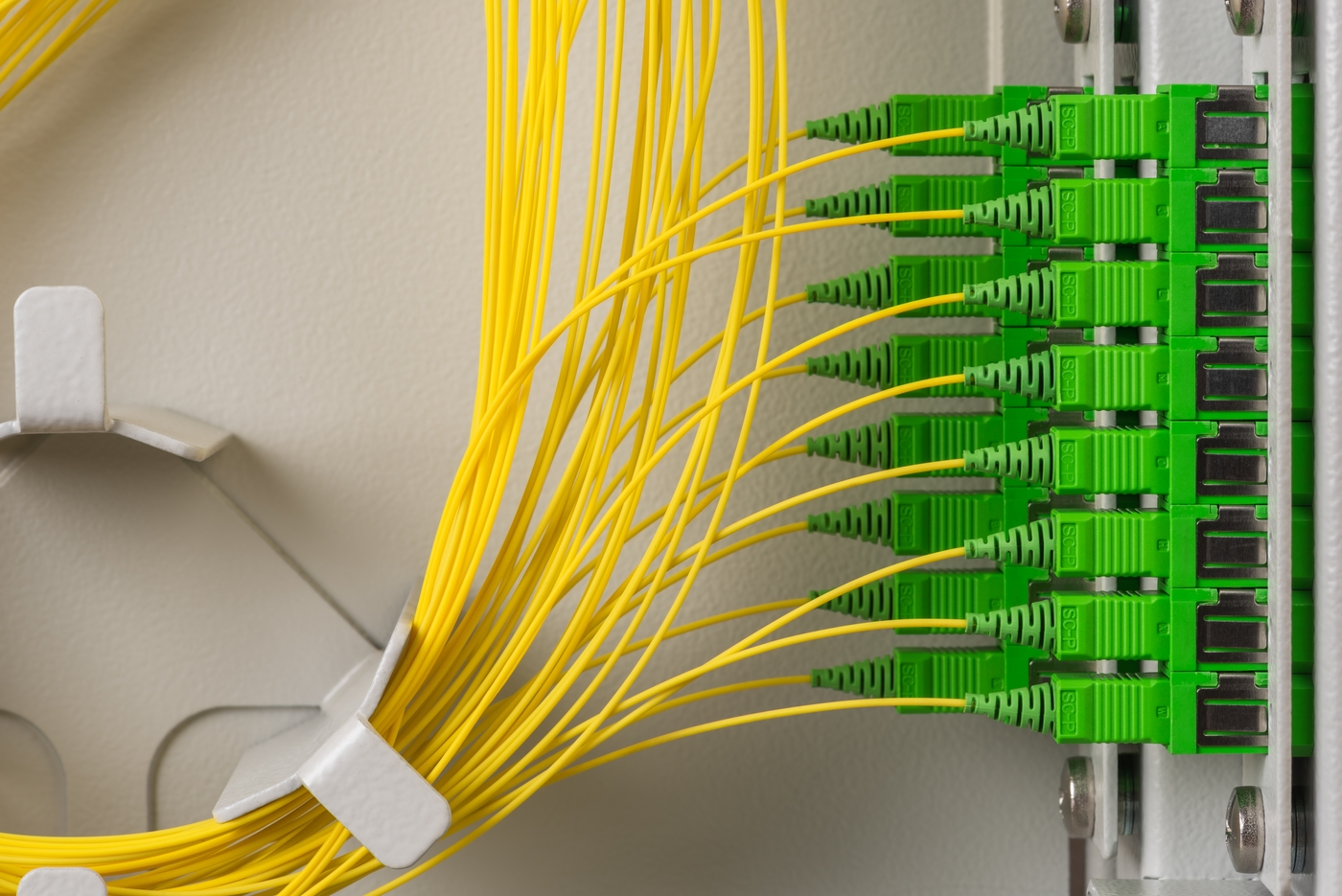
While fiber is not a new development by any means, bringing it closer to the customers and their ever-evolving needs requires advanced access strategies. Today, fiber-to-the-home or fiber-to-the-node have become a necessity to fulfil and implement triple and quad-play services, 5G networks, and high-speed broadband.
This is where the GPON technology provides service providers with a reliable roadmap to meet customer demands and optimise capital expense, RoI and electrical/optical fiber network maintenance costs. Short for Gigabit Passive Optical Network, GPON offers exceptional QoS, flexibility and dynamic bandwidth allocation proficiency to deliver modern broadband to homes and businesses.
In this blog, we will take a deep-dive into the exciting world of GPON:
– What is GPON?
– How does GPON work?
– What are the various components of GPON?
– What are the advantages and disadvantages of GPON?

Contents
What is GPON?

GPON is a leading standard of Passive Optical Network (PON) – a type of point-to-multipoint network technology that delivers broadband access to the end user via fiber optic cable.
Here, the term ‘Gigabit’ in GPON denotes the maximum speed it provides which is typically 2.488 Gbps downstream and 1.244 Gbps upstream. Bear in mind that this bandwidth is shared amongst end users, which typically results in broadband access speeds starting at 10 Mbps. On the other hand, ‘Passive’ denotes that the optical fiber network does not rely on any electrically-powered equipment in its path.
Today, GPON technology has proven to be the most common type of optical fiber connection which is almost 95% more energy efficient than a standard copper cable network. Additionally, GPON also has a 1:64 ratio on a single fiber. What this means is that one fiber cable in a GPON can deliver video, data and voice to up to 64 end users. This makes it the optical network standard of choice for achieving last-mile connectivity in an efficient and cost-effective manner, as a GPON reduces the number of fiber runs in a fiber optic network.
There is one other GPON characteristic that stands out. That is the use of Asynchronous Transfer Mode (ATM) encoding so as to integrate voice and data traffic on the same network. Ultimately, GPON is extremely useful today in delivering triple-play services (Data, IPTV, VoIP) at higher data rates, larger bandwidth and longer distances in a secure manner. GPON also supports all kinds of Ethernet protocols.
How GPON works?


Now that we have a fair idea about GPON, it is only natural to try to understand how it works. The key to GPON’s operation lies in its point-to-multipoint access fiber optic network topology.
GPON consists of three main elements: an OLT (Optical Line Terminals), ONU device (Optical Network Unit), and passive splitter. Here, the passive optical splitter is what enables the use of just one optical fiber cable that connects the internet service provider to multiple end users, as it typically splits the signal into up to 64 others.
So, how does the entire process flow? Here is a simple explanation:
- First, the Optical Line Terminal sends data in the form of optical signals through a process called optical Wavelength Division Multiplexing (WDM). The OLT is typically your ISP and can be considered as the starting point of a GPON.
- The signal propagates along a single length of fiber over an optical distribution network (ODN), reaching the passive splitter at the end. A GPON fiber network can reach distances up to 20 km.
- The passive GPON splitter receives the optical signal and splits it into multiple signals, up to 64. This is what enables point-to-multipoint access, thus enabling up to 64 fiber connections.
- Finally, in the last-mile, the split optical signals reach individual GPON ONT/ONU devices that are installed at the premise of a residence or a business. This is the terminating point of GPON and enables the conversion of optical data signal into an electrical signal. In a reverse manner, data is also sent upstream from the GPON ONT/GPON ONU to the OLT.
Components of GPON

Time to learn more about the functionality of individual components in GPON. The GPON standard is defined by the G.984 ITU-T recommendation for PON networks. Under it, it has four major components:
Optical Line Terminal
The OLT can be termed as the network manager of the Gigabit Passive Optical Network. Its role is to send and receive video, data and voice optical signals to and from the ONT at the receiver’s end. OLT sends downstream optical signals at 1550 nm for video and 1490 nm for voice and data, whereas it receives upstream optical signals at 1310 nm. This prevents interference. The GPON OLT is present at the service provider’s end, i.e., typically at a data center. Similar to a GPON ONT, OLT also converts received optical signals into electrical signals. It is connected to the optical splitter via backbone cabling.
Optical Fibre Splitter
The optical fiber splitter is a passive component that enables a single fiber optic cable to be split into multiple single strands of optic fiber that branch out and connect to individual Optical Network Terminals at end user premises. A GPON splitter often has a specified split ratio that could be 1:64, 1:32, 1:16, 1:8, 1:4, depending upon the number of outputs required. Such a splitter can be used for centralized splitting where the signals are split to, say, 64 end users, or for cascade splitting where the splitter is connected to other splitters down the line for a more branched out network.
Optical Network Terminal
The user end-point of GPON is the ONT, i.e., the Optical Network Terminal. It is a specialised modem for converting optical signals into electrical signals at the premises of the end-user. Thus, it enables broadband access for equipment like WiFi, TVs, desktops, etc. An ONT also sends aggregated and optimised data from the end user back to the OLT.

Transmitting Media.
The transmitting media consists of the physical, passive hardware in the form of cabling and various components that is used along the GPON infrastructure. This includes copper cables, patch cords for fiber optics, splitters, adapter panels, connectors, etc. Transmitting media plays a huge role in determining and optimising optical signal loss adequately.
Advantages of GPON
GPON has been surging in popularity since a long time due to its cost-effectiveness and convenience for mass-market fibre optic cable deployments. In 2021, the global market size for GPON was estimated at US$10 billion, predicted to rise to US$30 billion by 2028. There were over 250 million units of GPON products shipped globally in 2021 as well.
Factors such as growth of bandwidth-intensive applications, smart cities, IoT penetration, proliferation of 5G, GPON for mobile backhauling, etc., mean that GPON and its upcoming upgrades like NG-PON2 are the optical networks of choice.
This popularity of Gigabit Passive Optical Network is built upon a series of advantages:
- Energy-efficient: As a passive system, GPON utilises very little electricity to operate. It is also 95% more energy-efficient than copper networks.
- Affordable: Directly inferring from the previous point, GPON barely requires energy to function, thus reducing operational costs. It also does not require much IT support – another area where costs can be reduced majorly. As an optical fiber system that can connect directly to multiple customers using splitter technology, GPON requires less equipment – making it a highly efficient and cost-effective solution.
- High-speed: With speed being a significant demand for modern consumers and businesses, GPON ensures smooth traffic handling of up to 10/10 Gbps per subscriber along with a 40 Gbps throughput for the optical network.
- Secure: GPON utilises an Advanced Encryption Standard to keep hackers at bay. It is also a closed circuit and the optical fiber signals are isolated, making it a very secure optical fibre network.
- Stable: An advantage of GPON is how reliable and stable it is even in congested areas and heavy traffic demand. It ensures a minimum bandwidth allocation to end-users at all times, thus ensuring steady connectivity with the use of optical splitters. It also remains free from electromagnetic or radio interference due to the inherent nature of fiber optics.
Disadvantages of GPON
Despite the usefulness of GPON technology, it is not without its demerits.
- Compared to P2P systems, GPON technology is based on splitting and sharing the bandwidth amongst multiple users. This might become less than ideal in an increasingly bandwidth-intensive world where multi-gigabit networks are starting to become the norm.
- Another disadvantage of GPON technology comes from the susceptibility of fiber optic cables to bending, kinks or breakage. Fibre optic cables are very sensitive to such physical distortions. If they are installed without proper orientation and protection, they might become prone to reduced performance or breakage down the line.
Regardless, GPON continues to be favoured by service providers and end-users across the world. It is not only the most complex but also the most reliable, cost-efficient and most easy-to-install fibre optic cable technology in the world, and will continue to make a difference in this age of hyperfast connectivity.
FAQs
Where is Gpon used?
GPON full form is Gigabit Passive Optical Network. It is increasingly being used in FTTH and FTTP networks to deliver voice, data and video services at gigabit speed. It is a standard for Passive Optical Networks published by the ITU-T, used to provide last-mile fiber connections to the premises. It is faster than the EPON (Ethernet Passive Optical Network) and promises 2.5 Gbps speed, end-user Ethernet access, superior and highly secure Quality of Service, and complete OAM functions.
Is GPON a fiber?
No, GPON is not a fiber. Rather, it is a type of Passive Optical Network used to provide fiber broadband access to homes and businesses. The G in GPON stands for Gigabit. Its key feature is the use of passive splitters in the fibre distribution network. This allows a single feeding fibre from the provider to serve one from point to multipoint.
Is GPON a modem?
No, GPON is not a modem. It is a type of optical fibre network access architecture that uses passive splitters to carry one line of optical fiber to up to 64 premises – either residences or offices. It works on a point-to-multipoint access mechanism. However, as is the case with such networks, GPON also requires a device to convert the optical signal from the fiber into an analog electrical signal using an ONT, i.e., an Optical Network Terminal.
How do I connect my GPON to my router?
Connecting a GPON to a router means connecting its Optical Network Terminal (ONT) with the WiFi router using a wired connection. This is achieved usually through an Ethernet cable.
How many times can you split GPON?
One of the main characteristics of GPON is that it provides up to a 1:64 ratio on a single fiber line. That means that it can split a single optical fiber cable coming from an OLT (Optical Line Terminal, i.e., the endpoint of the service provider line in a Passive Optical Network) into up to 64 end-user connections, delivering data, voice and video in the process. This split ratio is what makes GPON the most popular Passive Optical Network in the industry.













